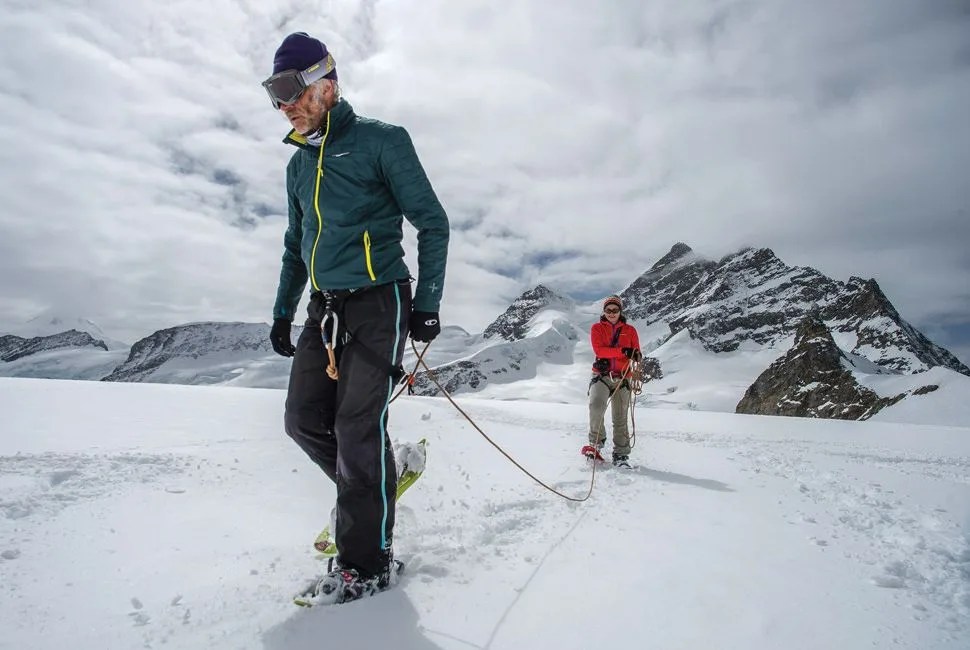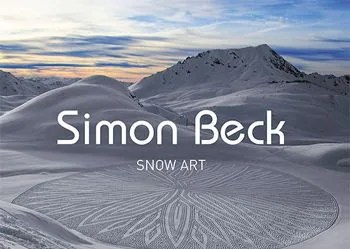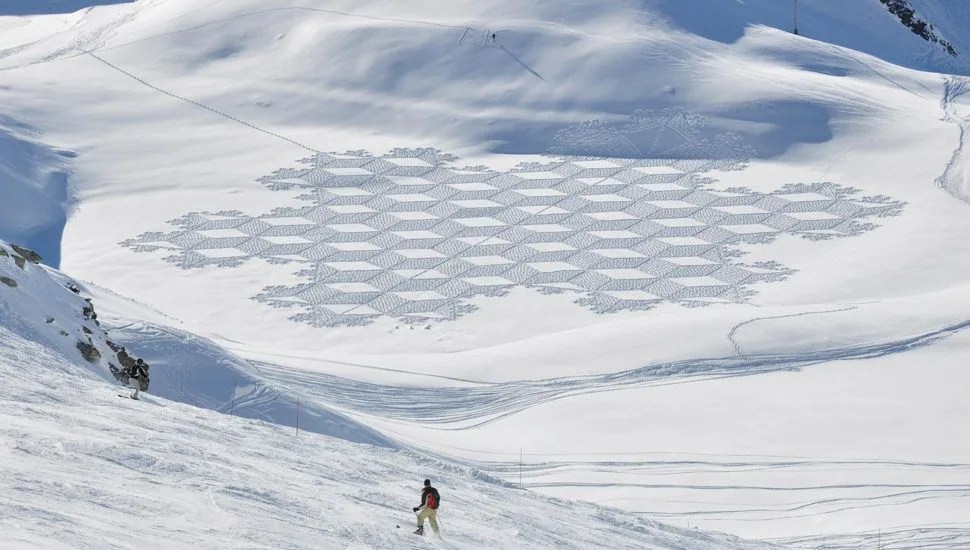Crunch, crunch. Crunch, crunch. Crunch, crunch.
That’s the sound Simon Beck would hear for ten hours straight were it not for Beethoven. During the “snow art season”, or winter as we call it, the thickly accented, 56-year-old Brit walks about the distance of a marathon in snowshoes during each of his works, marking out massive geometric designs on flat snowy fields and frozen lakes the size of soccer fields, all while listening to classical music. When he finishes, he exits his track of imprints and hikes up to where he can view his design in its entirety. After taking a picture, he goes home to rest. It’s a long day, with no guarantee that the work will still be there, untouched, come morning — but this is inherent in snow art, a medium of design of which Beck is at the forefront. We sat down with the sinewy man himself to talk about what motivates his carefully planned marches, and what he sees as the future of snow art.
MORE INTERVIEWS: Climber Ueli Steck | Outdoor Educator Buck Tilton | Chef David McMillan
Q. What’s one thing every man should know?
A. A man should know his limits, as Clint Eastwood said. Yeah, you’ve got to judge when to stop. Quite a wise comment I think.
Q. What’s the hardest thing you’ve ever done?
A. Oh dear, oh dear. I suppose my university degree. It was engineering science at Oxford University. I wasn’t really interested in it. I went there knowing I didn’t want to.
Q. Did you go into engineering after you graduated?
A. Yeah, I got a job in an office, but I hadn’t learned a great deal at university other than how to pass exams, and I couldn’t keep my mind on my work.
Q. So what are you working on right now?
A. Really, I regard drawing as my job, so right now I am unemployed; I am not doing any drawings. Soon the snow art season will start, and I’ll start making drawings in the snow and try to get some good drawings and good photographs. I also have a book, which is just about ready to be released to the public.


